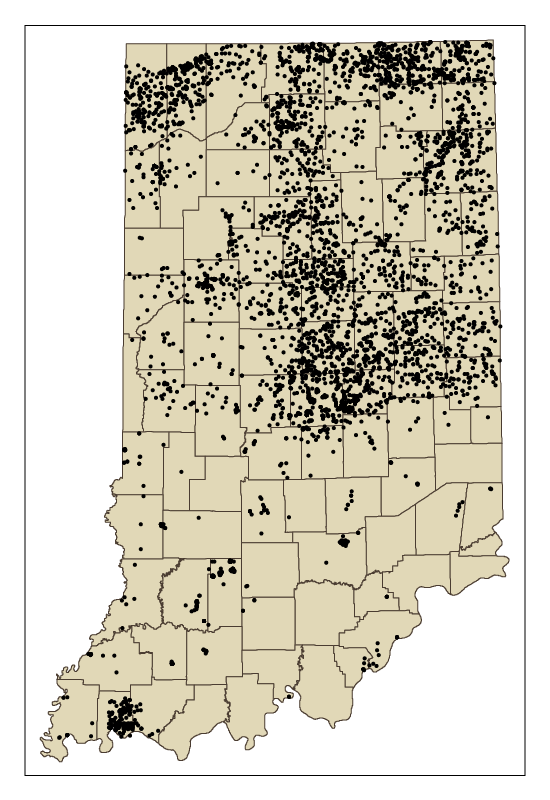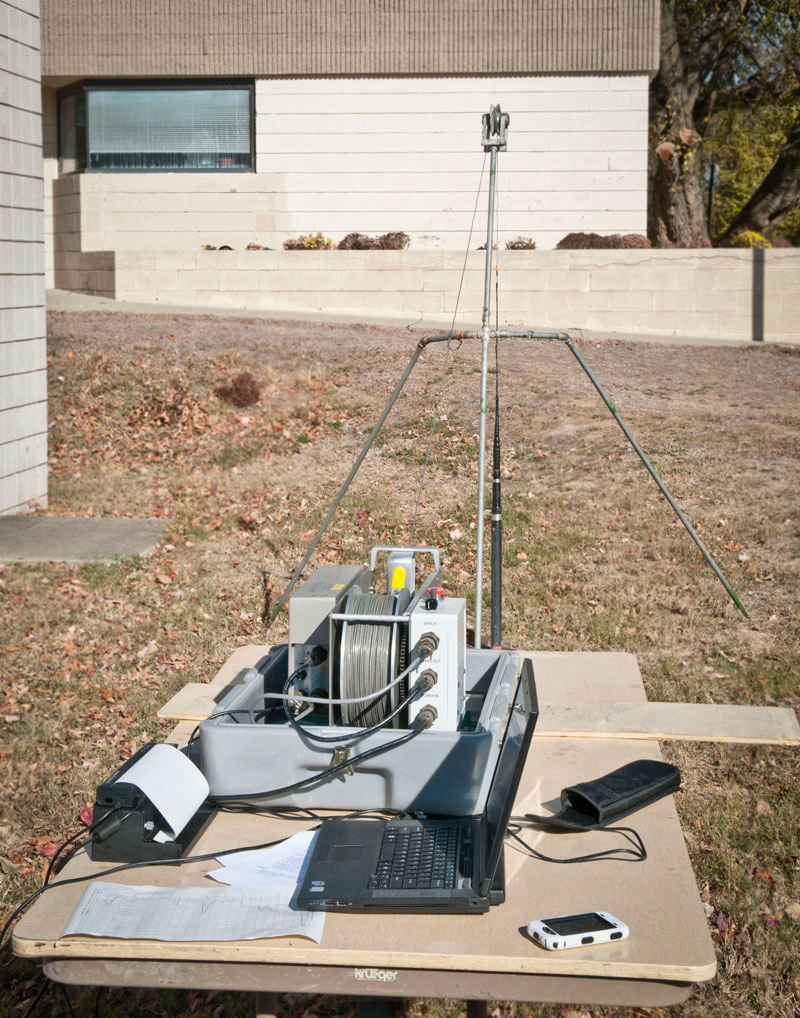
Figure 1.
Map of Indiana showing the distribution of gamma-ray logs collected by the IGS. Black dots represent the well locations through 2013.
Introduction
Downhole logging of
Gamma-Ray Log
Gamma-ray logs have two fundamental benefits that make them important to studies of geological materials: (1) they provide a
basic analysis of grain size and, (2) they can be collected in any form of cased borehole, above or below water.
Gamma-ray logs record

Figure 2.
Gamma-ray log profile in Marion County, showing gamma-ray signatures and sediment descriptions.
In midwestern environments, the gamma-ray log measures "shaliness" in

Figure 3.
Field set-up and data collection using the portable gamma-logging unit.
Glacial-Terrain Mapping
The gamma-ray log is a fundamental component of the IGWS approach to glacial-terrain characterization. For 25 years, IGWS seasonal programs put sampling/logging operations in the field alongside local water-well-drilling contractors throughout the state. IGWS geologists and staff collected cuttings from mud-rotary drill operations on a daily basis throughout the summer field season (May-September) and from contracted test holes. Samples were collected at 2- to 5-ft intervals and at major sediment changes, drained, and stored in paper cups to avoid crushing the clays. IGWS personnel collected gamma-ray logs of the wells prior to pump installation. Current programs focus on contracted test holes and the collection of continuous cores of sediment. Both analog and digital logs are collected in the field (fig. 3). Logs and their corresponding sample sets are analyzed, interpreted, and archived at the IGS.
Marion County
In Marion County, gamma-ray logs were used to show bulk differences in grain size, as well as mode and environment of deposition of the glacial sediments (Brown, S. E., and Laudick, A. J., 2003; Fleming, 1998). The relationship between the gamma-ray log signature and physical properties of the associated sample sets aided in the determination of specific depositional sequences. This relationship was used to help determine and map major glacial aquifers and confining units across the county.
References
Bleuer, N. K., 2004, Slow-logging subtle sequences - The gamma-ray log character of glacigenic and other unconsolidated sedimentary sequences: Indiana Geological Survey Special Report 65, 39 p.
Brown, S. E., and Laudick, A. J., ed., 2003, Hydrogeologic framework of Marion County, Indiana - A digital atlas illustrating hydrogeologic terrain and sequence: Indiana Geological Survey Open-File Study 00-14, CD-ROM.
Fleming, A. H., 1998, Using glacial terrain models to define hydrogeologic settings in heterogeneous depositional systems, in Fraser, G. S., and Davis, M. D., eds., Hydrogeologic models of sedimentary aquifers: SEPM Concepts in Hydrogeology and Environmental Geology, v. 1, p. 25-46.


